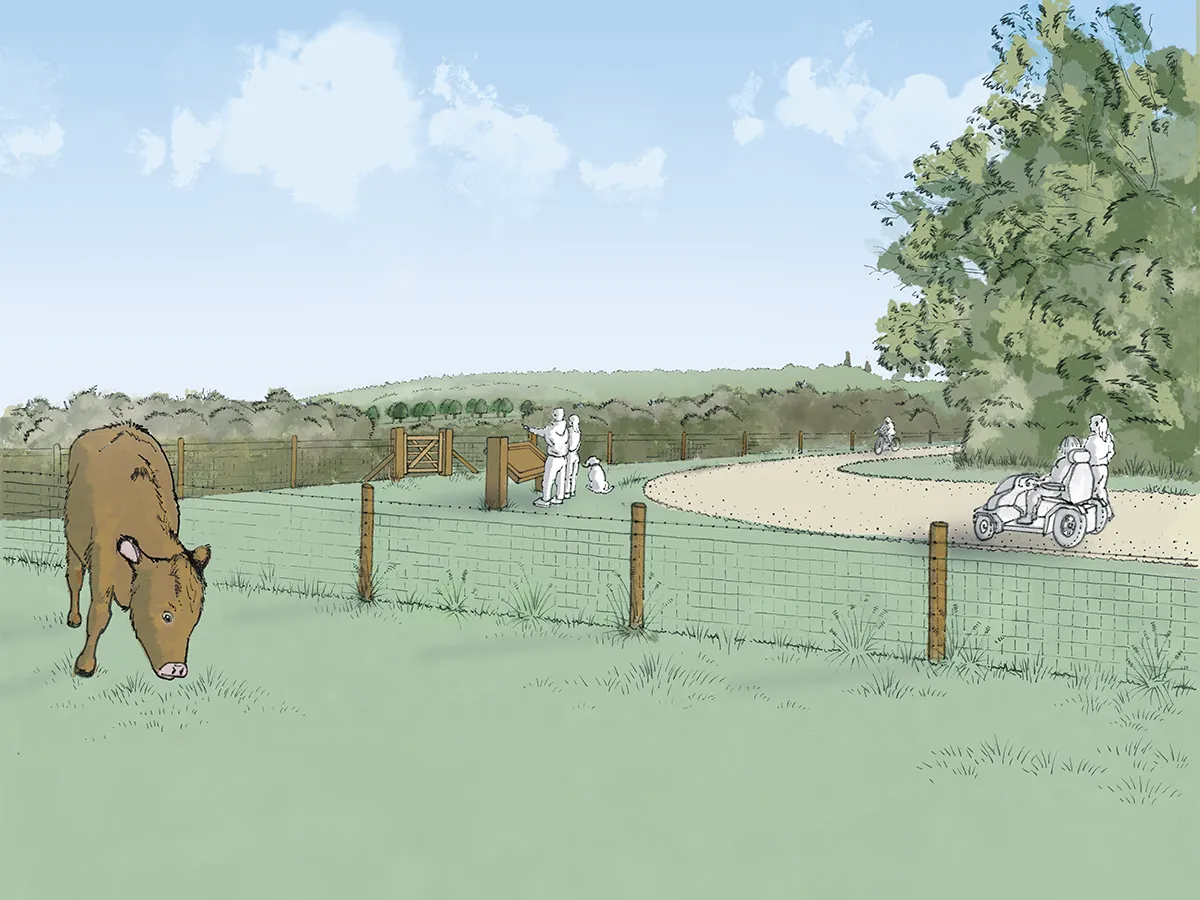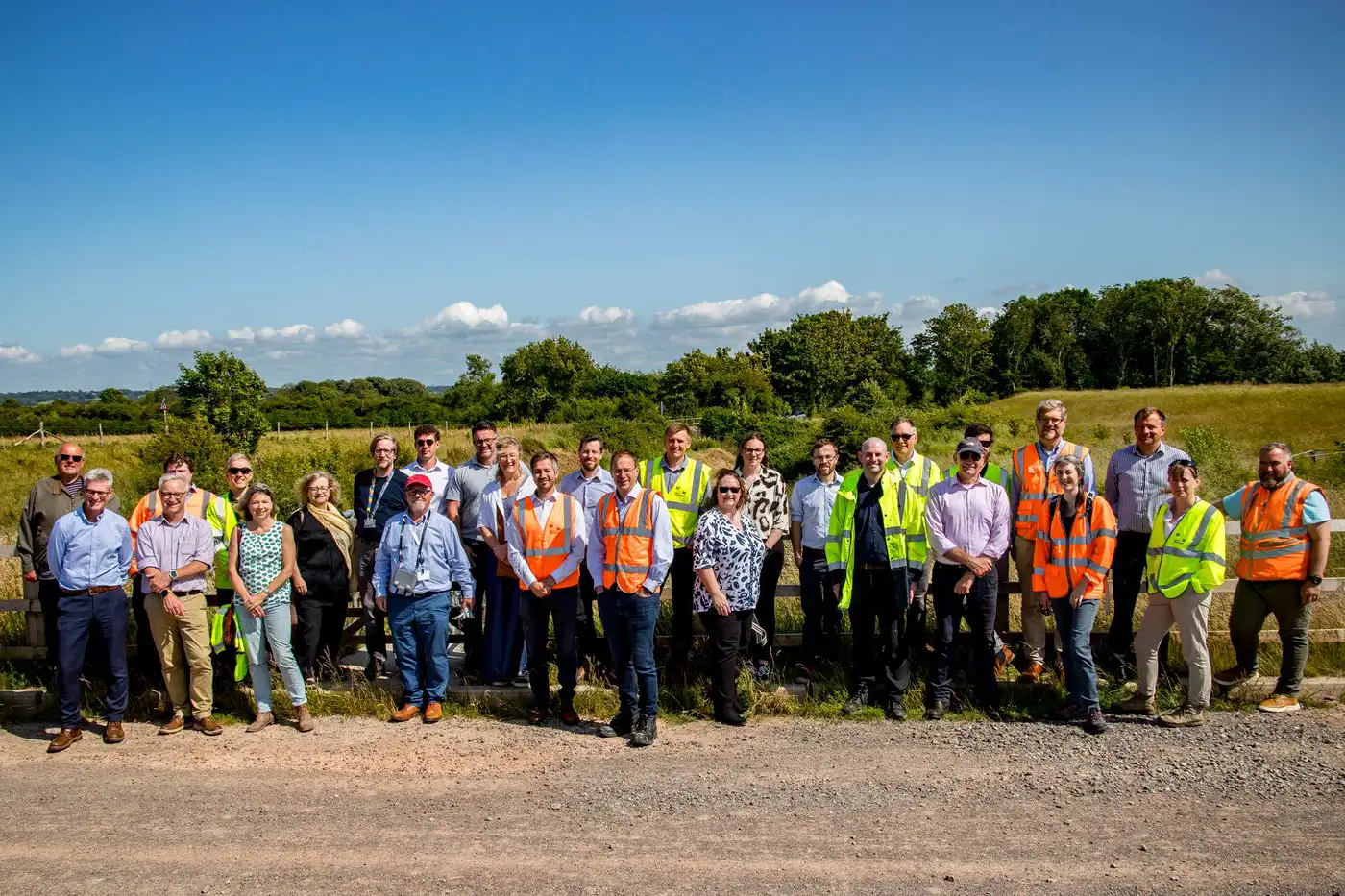National Trust has begun work on Saltram East, a new free-to-access Country Park near Plymouth. Phase one of the project launches with the creation of wildflower meadows and the construction of 2.5km of multi-user trails which will connect locals to an expansive accessible green space, rich with biodiversity and history. We worked closely with National Trust to develop strategic ecological and landscape transformation plans that prioritise nature, heritage and accessibility.
Activating the Space
The new country park will connect the estate to the network of recreational routes that are already provided, as well as the wider area of Plymouth and its nearby communities by linking the existing local walking and cycle network with 2.5km of new multi-user trails. Accessibility is at the heart of the design of the new country park and the trails have been designed to be suitable for pedestrians, cyclists, wheelchairs, pushchairs and tramper mobility scooters.
The undulating terrain required careful analysis to integrate the trail network naturally into the landscape avoiding steeper gradients and creating a great visitor experience journey. A careful balance between access and conservation has been achieved to sensitively integrate the country park with the existing landscape, ecological and historic context, while encouraging exploration across the 32 hectares of new country park. The trails element of the new country park is part funded by a generous grant from Sport England, and design collaboration on the layout for the trails network also involved National Trust and Sports England. This positive collaboration has ensured that the trails will be suited to many different users and will provide the fullest experience of the new country park’s vistas and landscape. In future phases, tree planting, incidental play features, interpretation signage and activity zones will be added.
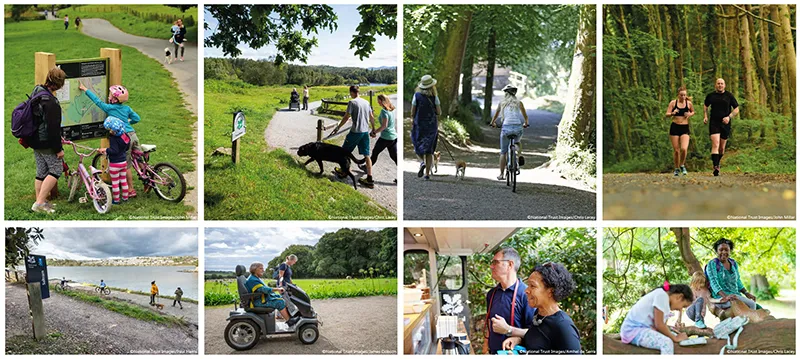
Nature Recovery through Habitat Enhancement
Our ecology team carried out a suite of site surveys and assessments and produced an Ecological Impact Assessment (EcIA) and habitat condition mapping to inform the Planning Application and evaluate the park’s biodiversity net gain potential. The proposals focus on protecting existing flora and fauna while enhancing habitats through increasing species diversity of meadow sward, as well as strategic planting of trees, shrubs and hedgerows. This survey work and EcIA was crucial to gaining planning approval, demonstrating a commitment to deliver biodiversity net gain on-site. A Habitat Management and Monitoring Plan (HMMP) was written explaining how those biodiversity gains would be delivered, through sustainable land management approaches such as conservation grazing.
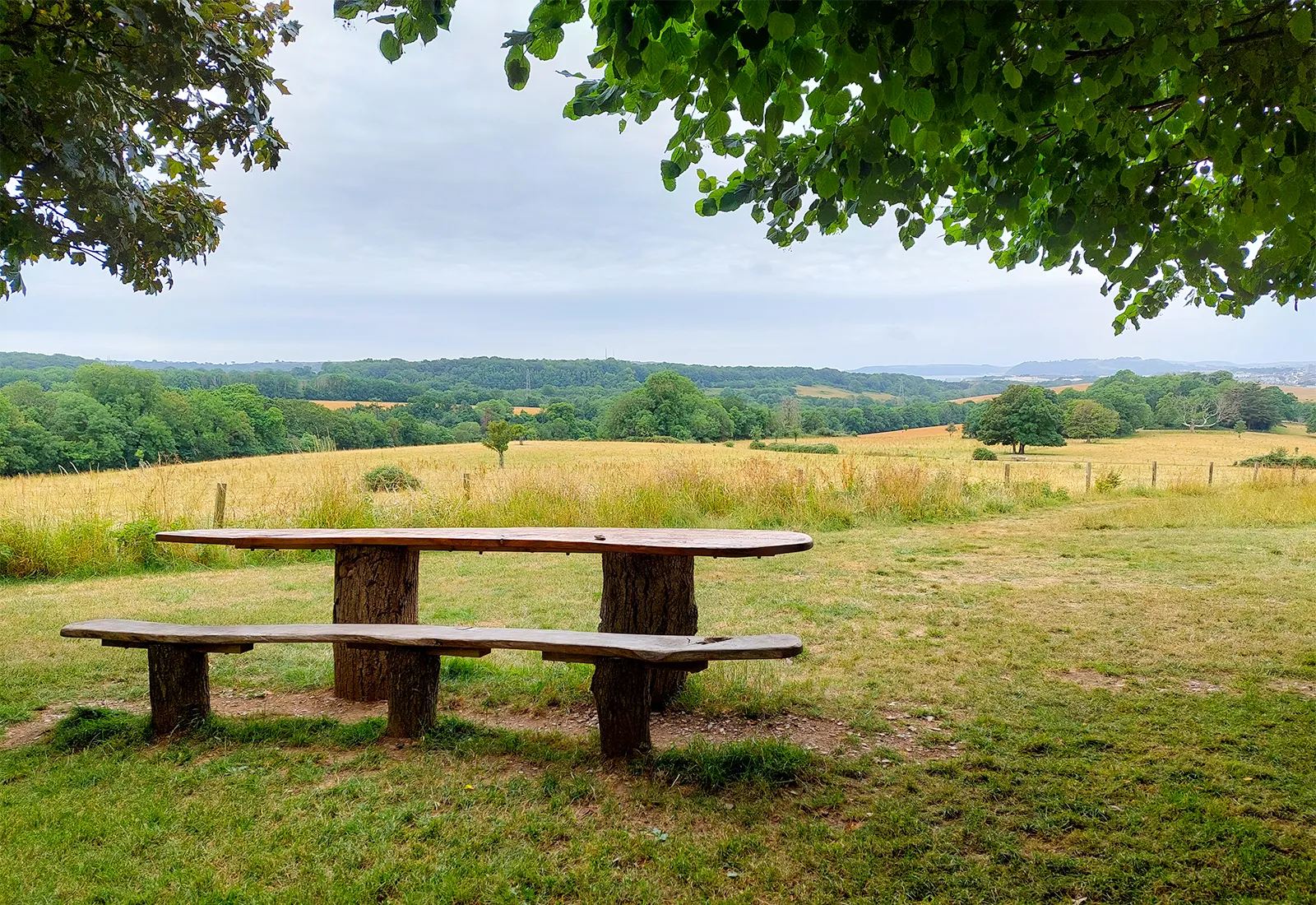
Future Saltram – The Big Vision
This is the first phase of the development of Saltram East new country park. Over the coming years, a series of access and activity interventions will transform areas of the Saltram Estate into a vibrant green lung for Plymouth. This will help to deliver part of the local planning Policy for strategic green space on the eastern edge of the city, providing a resource for recreation, healthy lifestyles and learning. Highlights will include play areas, an outdoor events space, and a purpose-built wheeled activity zone for scooters, wheelchairs, push bikes, and assisted bikes.
“The green spaces in our towns and cities are so important to us all – they’re places to unwind, to play, to improve our health, and to support wildlife. We want to bring nature closer to people’s doorstops, and by opening up this area of land, we hope to do just that for more people in Plymouth.” – Hilary McGrady, Director of National Trust
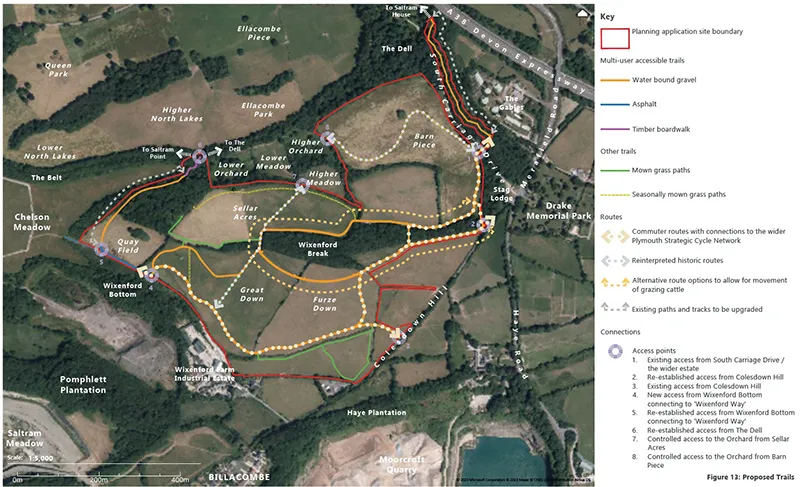
Historical Landscape Inspiration
Much of the landscape of the Saltram Estate are designated on the Register of Parks and Gardens of Special Historic as grade II*, and as an outstanding nationally significant eighteenth-century landscape. The northern extent of the new country park lies within the designated area, and its north-facing slopes also form part of the Essential Setting to the historic parkland. In this context, the park preserves the setting of the Register Park while opening the space for appreciation of the area’s heritage. The new country park forms a significant part of the historic visual setting to the designed landscape of Saltram Park, with it once captured in views of the estate in an 18th-century painting by William Tomkins. In the painting, the rolling hills, tree plantations and farmland forms the foreground to the to the estate, demonstrating an appreciation of the improved and productive landscape. The historic view will be reimagined with a replica viewpoint for everyone to enjoy. Our collaboration with Nicholas Pearson Partnership, ensured that the key design features of the wider historic landscape informed the landscape design. As part of the wider network of trails, historic tracks will be reinterpreted, reviving traditional routes once used to navigate the landscape.
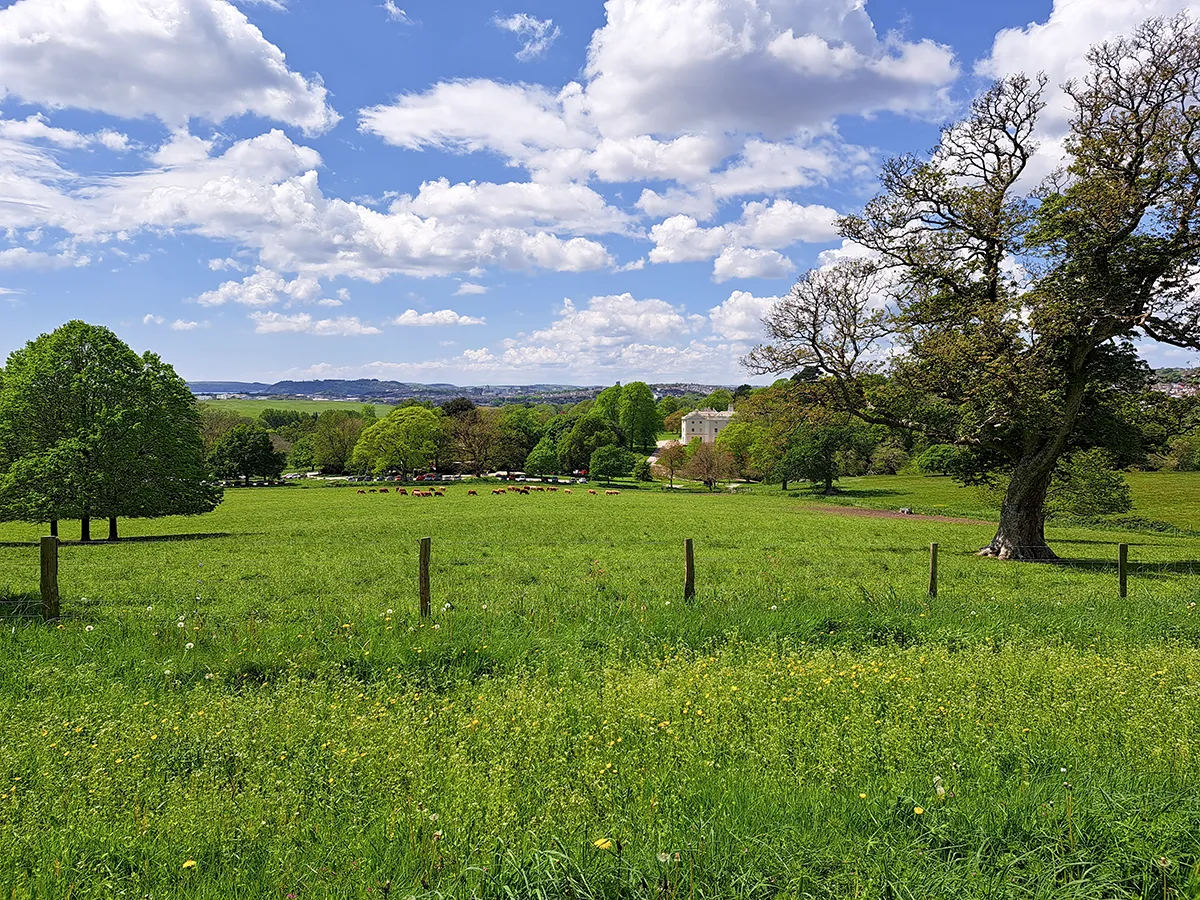
Collaborative Design Process
At Nicholas Pearson Associates, collaboration is one of our core values and this was demonstrated throughout the survey, design and planning phases of the project. This teamwork involving the client group, co-consultants and members of our Landscape & Ecology teams, ensured a cohesive environmental design was created that balances ecological integrity with landscape vision, community needs and historic influences. The result of that collaboration is a scheme that delivers real value and has already received enthusiastic feedback from the public on National Trust’s social channels.
Planning consent was granted in Spring 2025 and work started on site in Summer 2025.

